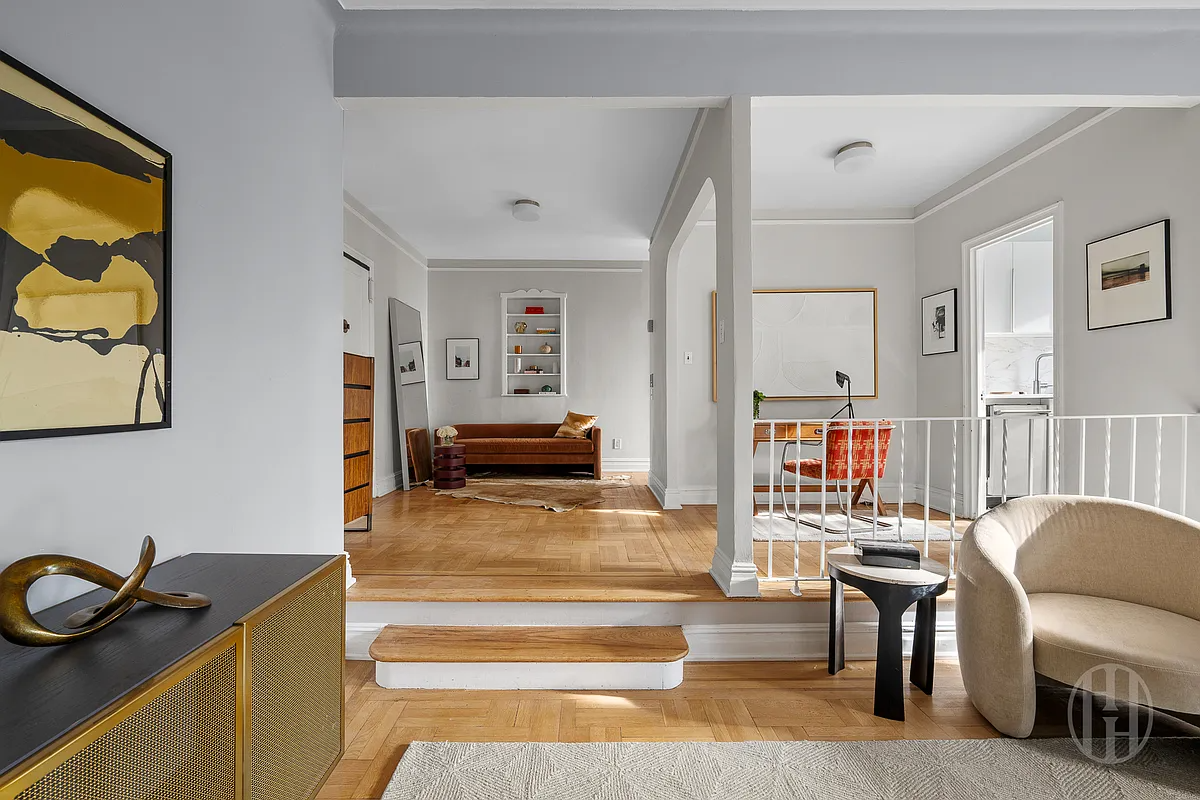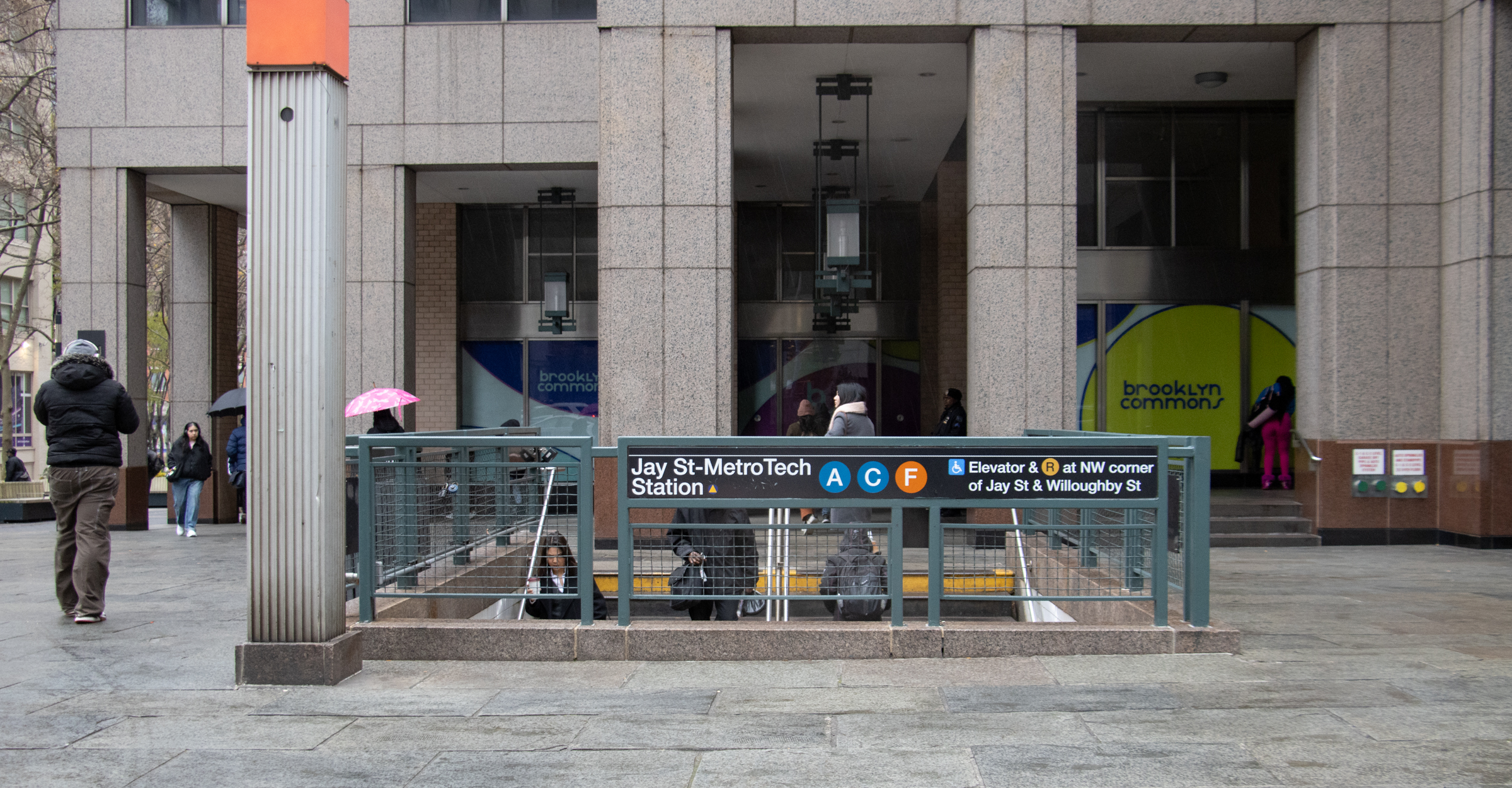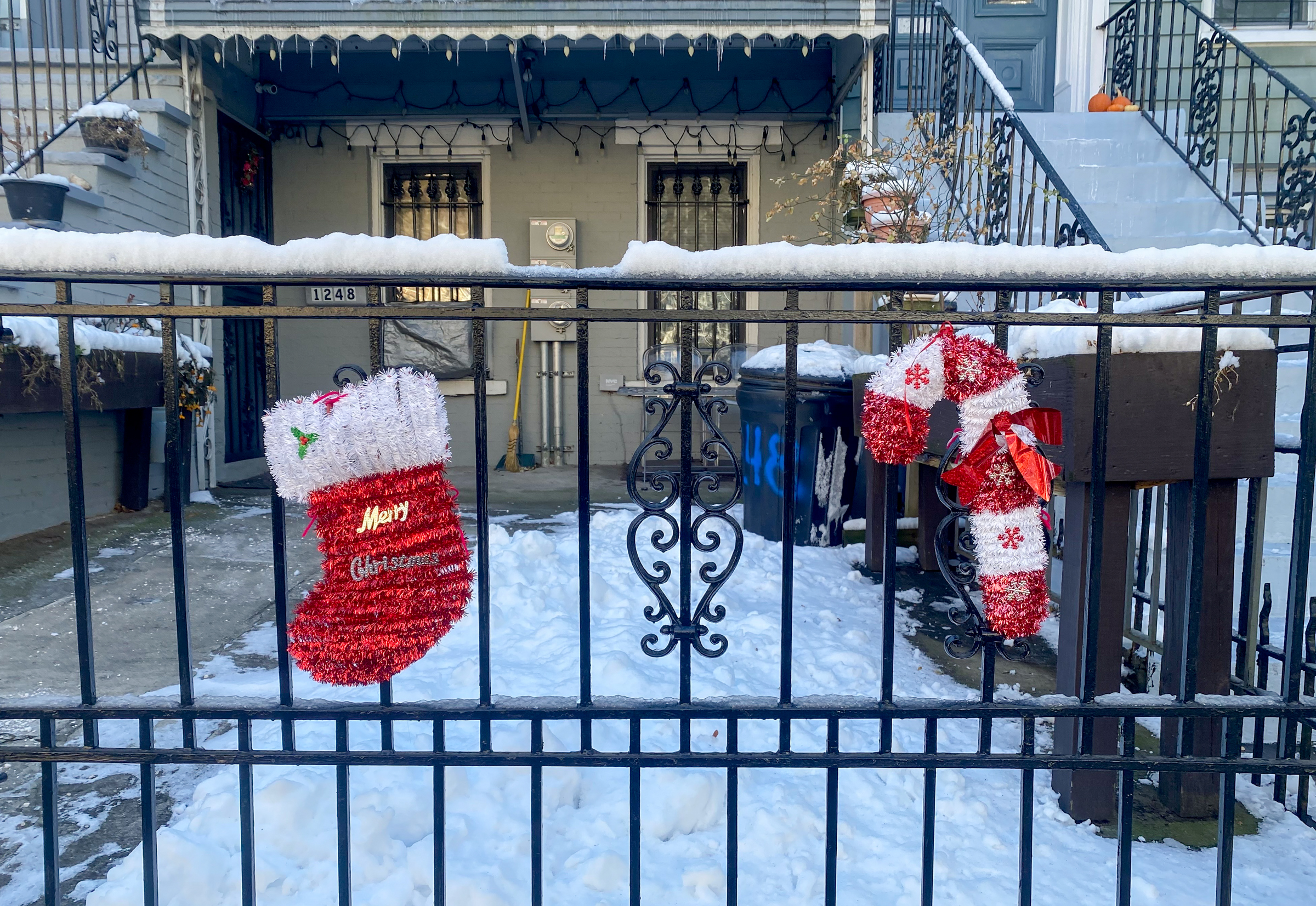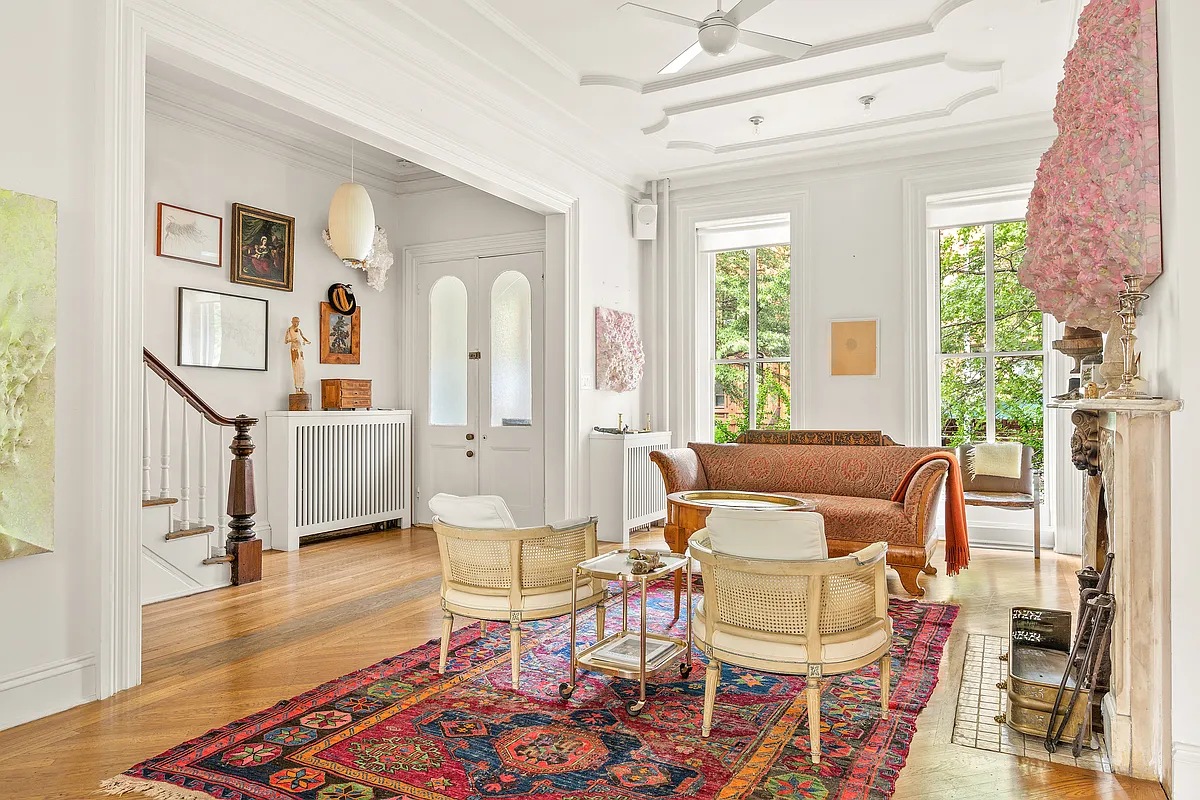Building of the Day: 135 Joralemon Street
The BOTD is a no-frills look at interesting structures of all types and from all neighborhoods. There will be old, new, important, forgotten, public, private, good and bad. Whatever strikes our fancy. We hope you enjoy. Address: 135 Joralemon Street, between Henry and Clinton Name: Private house Neighborhood: Brooklyn Heights Year Built: 1833 Architectural Style:…


The BOTD is a no-frills look at interesting structures of all types and from all neighborhoods. There will be old, new, important, forgotten, public, private, good and bad. Whatever strikes our fancy. We hope you enjoy.
Address: 135 Joralemon Street, between Henry and Clinton
Name: Private house
Neighborhood: Brooklyn Heights
Year Built: 1833
Architectural Style: Federal, with later porch and ironwork.
Architect: Unknown
Landmarked: Yes, part of the Brooklyn Heights HD, the first HD, landmarked in 1965.
Why chosen: For many people, if you had to put a building on the cover of a book about Brooklyn Heights, this would be it. Part of its charm is its location, not over in the older, northern part of the Heights, where clapboard houses are more common, but here, sandwiched between buildings of a much later date, a delightful remnant of an earlier time, when all of Brooklyn Heights was filled with Federal style clapboard houses and buildings. The earliest homes over in the Middagh Street area date from the 1820’s, this one is only ten or so years later, which still makes it one of the older buildings in the Heights.
It’s a wonderful two story, plus basement floor and attic, with twin dormers, clapboard siding, and a wide Italianate porch superbly ornamented by cast iron work that gives the house a Charleston or New Orleans flare. The porch and ironwork were added sometime in the middle 1800’s. Records show a Dr. John Haslett, a surgeon with the US Navy, living here in 1833, perhaps the first owner of the house. Brooklyn Heights had its ups and downs over the century, and by 1936, when photographer Berenice Abbott was documenting the buildings of Brooklyn, the house was looking a little worse for wear, but still had great dignity.
On New Year’s Eve, 2004, a devastating fire burned through the interior, and many feared the house was too far gone to restore. But it wasn’t anything a whole lot of money couldn’t fix. By 2008, the renovated house was the winner of the Landmarks Conservancy’s Lucy G. Moses Preservation Award. The line to get into the house during that year’s Brooklyn Heights House tour stretched for a block, showing that there is much interest in one of Brooklyn’s most iconic houses. That year it also was listed for almost $6 million. It went down in price by a couple million, but I don’t think Dr. Haslett would even be able to comprehend that much money. Who would have thought? I really like the shutters in the 1936 photo.

(Photo: Berenice Abbott, 1936. NY Public Library)

(Photo: Gotham Gazette, by way of Landmarks Conservancy)





Thwackamole- landmarking has actually stabilized neighborhoods and kept property values up. Additionally, as in Crown Heights North, it was neighborhood people who got the process started. It cam from them, and was not something decided on by LPC arbitrarily. The fact that landmarking has stabilized neighborhoods and kept or increased property values is a plus. It’s not costing you anything.
Thwackamole;
Once again: extremely well-said. A++ from the Benson Institute of Higher Learning.
I totally support property ownership. And, were landmarks not so restrictive, I would have bought this property and turned it into a a small contextual apartment building, which would have made
me happier
the 10+ tenants happier
the city happier
Likewise, if the law allowed it, I’d support the current owner if he wanted to knock down the building and build something bigger.
So the problem here, is that the law needs to be changed. We have a tremendously inefficient law that freezes our neighborhoods the way they were 45 years ago, makes it incredibly expensive to change them, prevents replacement of obsolete buildings by more efficient ones, and dramatically increases costs to middle class people like myself.
Thwackamole, the problem with your little scenario is a little thing called property ownership. The owner of this “generic 1830’s house” is entitled to have it sit there until Armageddon or beyond, if he/she so chooses. YOU, or the gob’ment do not get a vote as to use, as long as they are acting within the law. Speaking of laws, landmarking is not just a designation, it too, is on the books as law. Under such, this house cannot be replaced with a 6 story apartment building, and will not be replaced with a 6 story apartment building, thank God. You and Benson need to get over it.
To act as if the replacement of this house by an apartment building would do a damn thing to alleviate overcrowding, or add money to the city’s coffers, or make possible affordable housing in Crown Heights, is beyond absurd. Next thing you’ll be saying that an apartment building in this location will bring about world peace. I guess we’ll just have to struggle without it, because this building is staying right here, just as it is, in all its “generic” glory.
thwackamole- do you advocate eminent domain to take over this one house in order to house 10 people? Do you advocate the City losing all of its history and the charm of historic neighborhoods to build human warehouses? No more brownstones? No more single family houses? How’s that going to work?
I’ll expand my statement:
Under a reasonable and contextual zoning plan, we could either:
a) Have 1 restored 1830s house that cost $4.5 million housing 2-4 people, or 1.125 million per person.
b) knock it down and build a house identical to the ones next to it that would contain 10 1-bedroom apartments, each holding 1-2 people, for a total of 10-15 people at a cost of around $3 million or less. Cost per person is around $200k.
These ‘extra’ 10 or so people would be extremely close to mass transit, parks, shopping, employment centers, schools, and houses of worship. Instead, if they want to live in New York, they’ll have to find housing that is somewhere else.
By eliminating the denser and ‘modern’ option, we essentially prevent the creation of middle class housing and force the middle class out to the periphery of new york. We also give up the substantially higher tax revenues of a 10-family vs a 1 family, and we make our mass transit system work less efficiently, since more people will now have to commute a longer distance.
So the real question is ‘is the preservation of a generic 1830s house worth making 10+ more people less happy?’
For those who support landmarks at all costs, at WHAT COST do we preserve buildings over improving people’s lives?
Benson- here’s an idea- tell Jon you want to write articles for him and then you can vent your spleen all the time. Of course most of us won’t want to read it, but hey- you’ll have your little soapbox instead of constantly trying to hijack MM/s threads.
Oh Montrose, thanks so much for putting out this article!! It’s just such a joy to see an old home.
I’m so glad that there is no more knowledge to be learned regarding city planning, land use and development. All that was good and noble happened prior to 1900, and it is our duty to just study these homes in amber, and lament the appearance of these evil, modern-day developers. It is our duty to keep them away from these sacred, landmarked areas.
The only thing that could make my day more complete is to hear another story from NOP about how wonderful life was in 1950’s Crown Heights.
AT LAST YOU SEE THE LIGHT!
“Advocating for the further development of this BH site is akin to disdain for the Coliseum in Rome or the Palace of Versailles.”
Advocating destroying NYC’s architectural history shows that one doesn’t have an appreciation for such things. So why would you care for the Coliseum or Versailles? Or does something need to be really old?? really ostentatious?
Granted our architectural history isn’t as old or maybe to you not as impressive as that in Europe but nonetheless should be preserved.
okay now I’m really bored. and done.